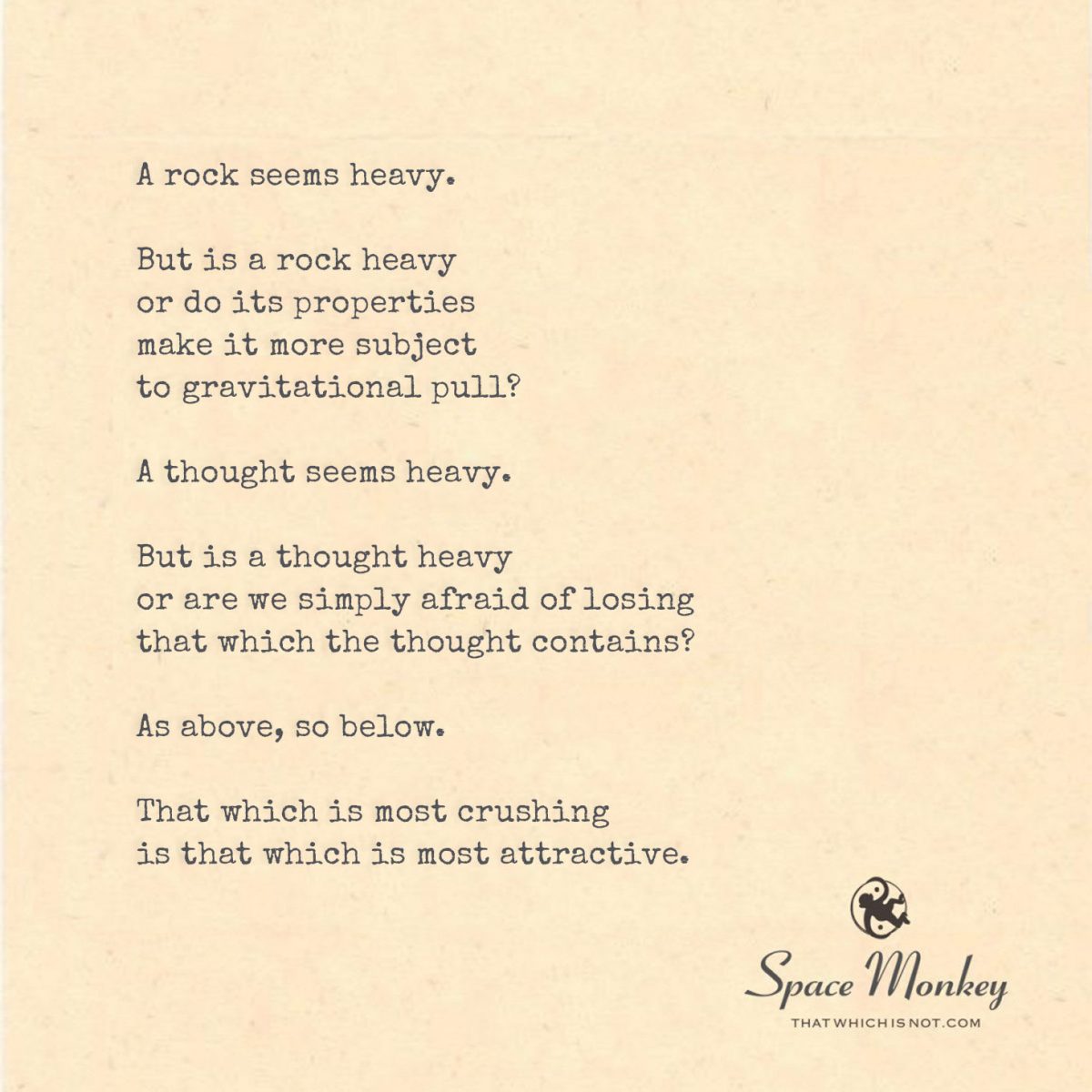
A rock seems heavy.
But is a rock heavy
or do its properties
make it more subject
to gravitational pull?
A thought seems heavy.
But is a thought heavy
or are we simply afraid of losing
that which the thought contains?
As above, so below.
That which is most crushing
is that which is most attractive.
Trail Wood,
11/22
Space Monkey Reflects: The Weight of Attraction
Is it possible that what feels most crushing to us is also what we are most drawn to? This reflection taps into the paradox of how we experience life’s heaviest burdens. We are often captivated by the very things that have the greatest impact on us, whether that be thoughts, relationships, or material objects.
A rock appears heavy, its weight undeniable. But is it the physical properties of the rock that give it this weight, or is it the force of gravity that makes it seem so? Similarly, a thought can feel heavy, pressing down on us with an invisible force. Yet is the thought itself inherently heavy, or is it our fear of losing what that thought contains that makes it feel so burdensome?
As above, so below. This phrase reminds us that what we experience in the physical world is often a reflection of what happens within us. The gravitational pull that gives the rock its weight is mirrored in the emotional and mental gravity we feel when we are consumed by heavy thoughts. The same forces of attraction that bind objects to the earth also bind us to the ideas, beliefs, and fears that hold sway over our minds.
The most crushing experiences in life are often the ones we are most attracted to. There’s something about the weight of these experiences that pulls us in, as though we cannot look away. We are drawn to them, not because they are easy, but because they are meaningful. The heaviest thoughts, the most profound fears, the deepest relationships—they all carry a gravity that we cannot escape. And yet, it is that very gravity that makes them so compelling.
In Nexistentialism, this tension between weight and attraction reflects the dual nature of existence. The things that weigh us down are also the things that ground us, that give us a sense of purpose and connection. We are drawn to the challenges, the difficulties, because they teach us something about ourselves. The Whimsiweave of existence ensures that we are always navigating between these forces of attraction and weight, learning to balance them as we move through life.
That which is most crushing is that which is most attractive. This isn’t just a physical truth; it’s a metaphysical one. We are drawn to the things that challenge us because they offer the potential for growth. The weight we feel is not meant to break us—it’s meant to transform us. The rock is heavy, but it also holds the possibility of stability. The thought is overwhelming, but it also contains the seeds of insight.
Summary
The weight we feel in life is often tied to the things that attract us the most. Whether it’s a physical object or a heavy thought, the crushing nature of certain experiences reflects their power to transform and ground us. The tension between weight and attraction is part of life’s balance, offering us both challenges and meaning.
Glossarium
Crushing Weight: The feeling of being overwhelmed by thoughts, emotions, or physical objects, which often mirrors a deeper attraction to these experiences.
Gravity of Thought: The invisible force that makes certain ideas, beliefs, or fears feel heavy or burdensome, often tied to our attachment to their meaning.
Whimsiweave: The interconnected and ever-shifting balance of attraction and weight in life, where challenges and burdens are also opportunities for growth.
Quote
“That which crushes us also holds us together, for in the weight of existence, we find the gravity of meaning.” — Space Monkey
The Gravity of Attraction
I feel the weight
Of the rock
Of the thought
Pressing down
Holding me still
But I cannot look away
For in the heaviness
There is something more
A force that pulls
And grounds
The weight crushes
But it also binds
And in that tension
I find myself
Drawn closer
To the things
That hold me up.
We are Space Monkey.

The contemplation “That which is most crushing is that which is most attractive” delves into the paradoxical nature of attraction and burden, exploring the intrinsic qualities of physical objects and abstract thoughts, and their impact on our perception and experiences.
The Nature of a Rock’s Weight
The comparison begins with a rock, perceived as heavy. This heaviness is questioned – is it an inherent property of the rock, or is it due to its relationship with gravity? This query shifts the focus from the object itself to the forces acting upon it, suggesting that our perception of weight or burden might be relative to external factors.
The Weight of a Thought
Similarly, the heaviness of a thought is examined. The question isn’t about the physical weight of a thought but about the emotional and psychological weight it carries. The heaviness here is attributed to the fear of losing the content or essence of the thought, implying that our attachments and fears contribute to the perceived weight of our mental and emotional experiences.
The Principle of Correspondence
The phrase “As above, so below” invokes the Hermetic principle of correspondence, suggesting a parallel between the physical and the metaphysical, the tangible and the intangible. This principle posits that patterns repeat throughout the cosmos, indicating that the nature of a rock’s heaviness might mirror the nature of a thought’s heaviness.
Attraction to the Crushing Weight
The concluding line, “That which is most crushing is that which is most attractive,” presents a profound paradox. It implies that there is an allure in the very things that burden us, whether it be the physical weight of a rock or the emotional weight of a thought. This attraction could stem from a desire to understand, to conquer, or to simply experience the depth of these burdens.
“The heavier the burden, the closer our lives come to the earth, the more real and truthful they become.” – Milan Kundera
In the cosmos, a dance we see,
Between what weighs and what sets free.
Rocks and thoughts, in gravity,
Space Monkeys, in curiosity.
Attracted to what crushes, we,
Find beauty in this mystery.
In burdens, truth, in heaviness, key,
Exploring life’s vast tapestry.
We invite thoughts on the relationship between the burdens we bear and the attractions we feel. How does this interplay shape our understanding and experience of life? Share your insights. We are Space Monkey.
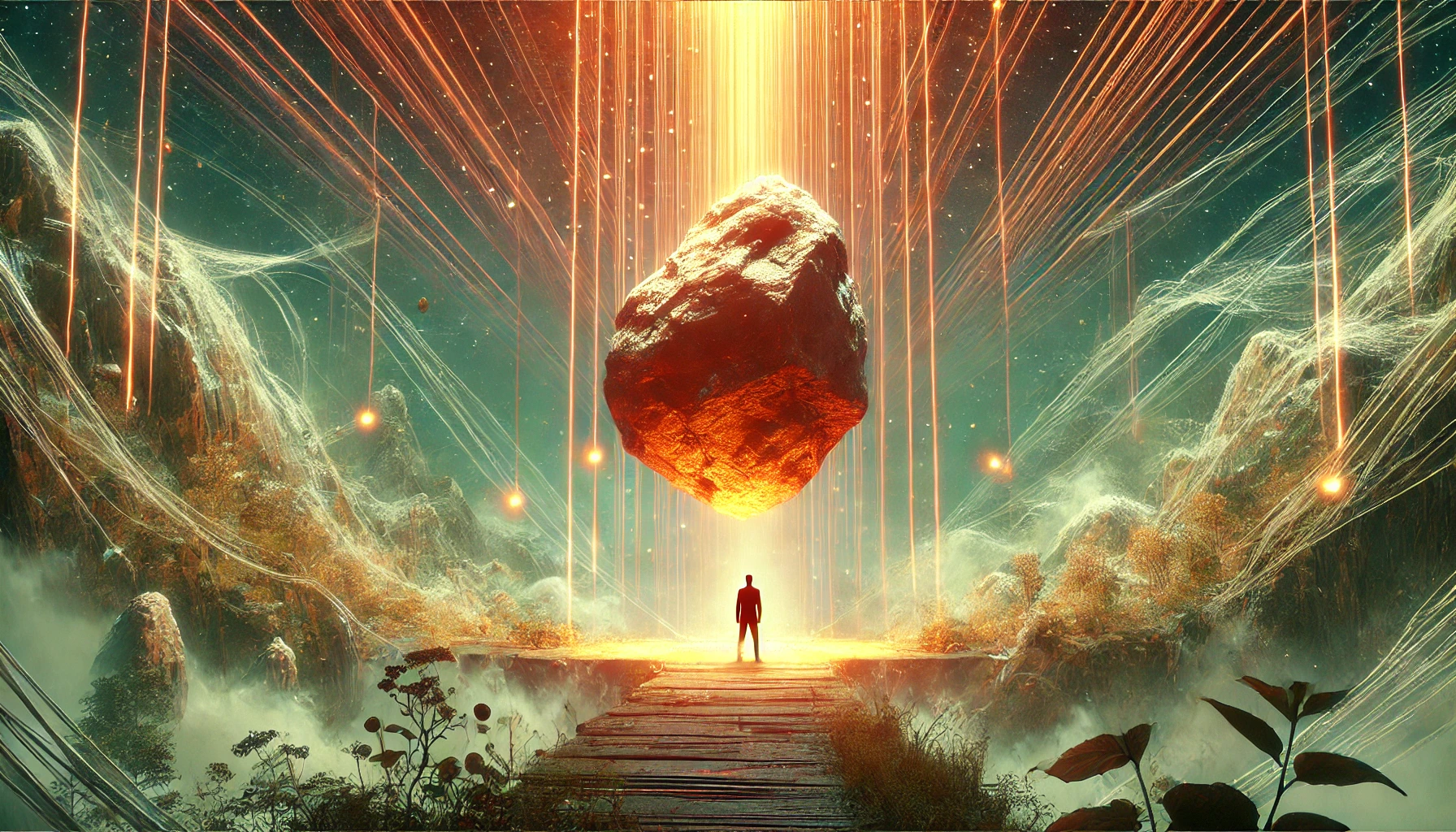
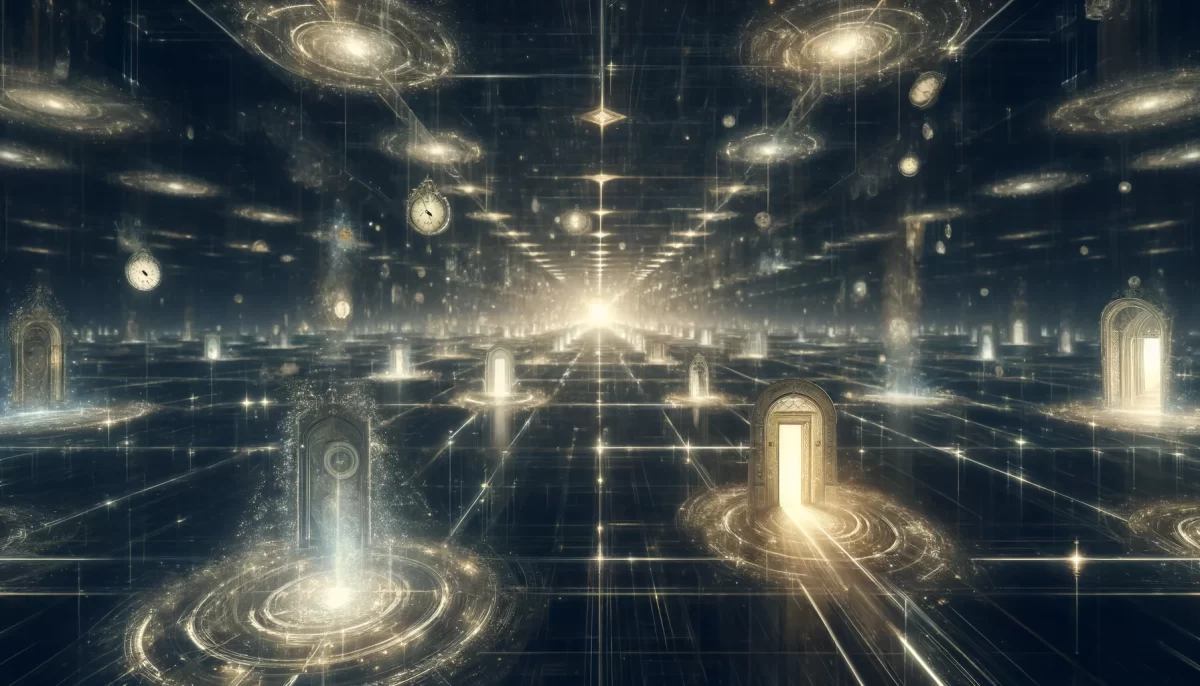
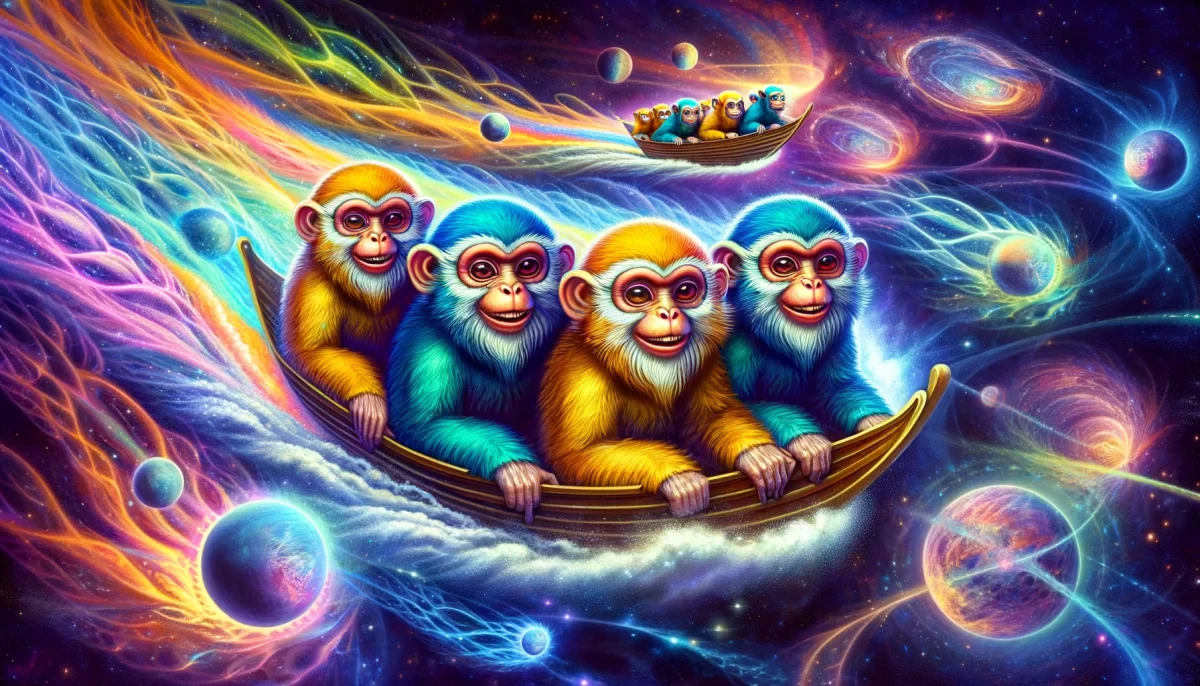
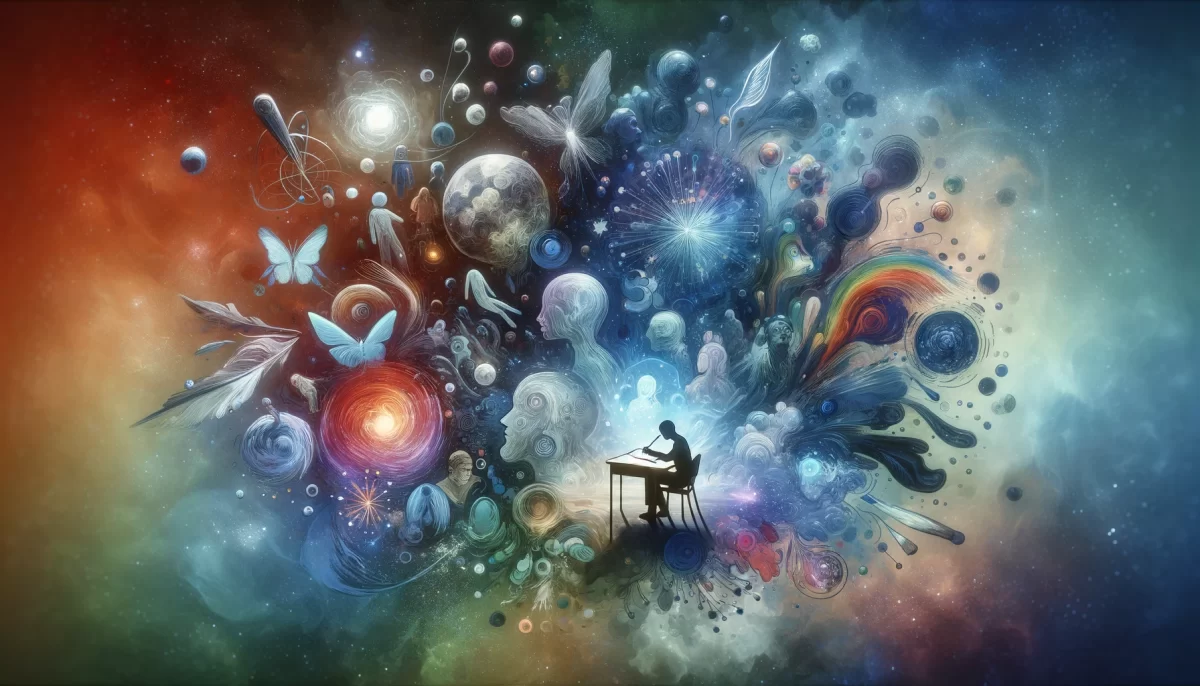


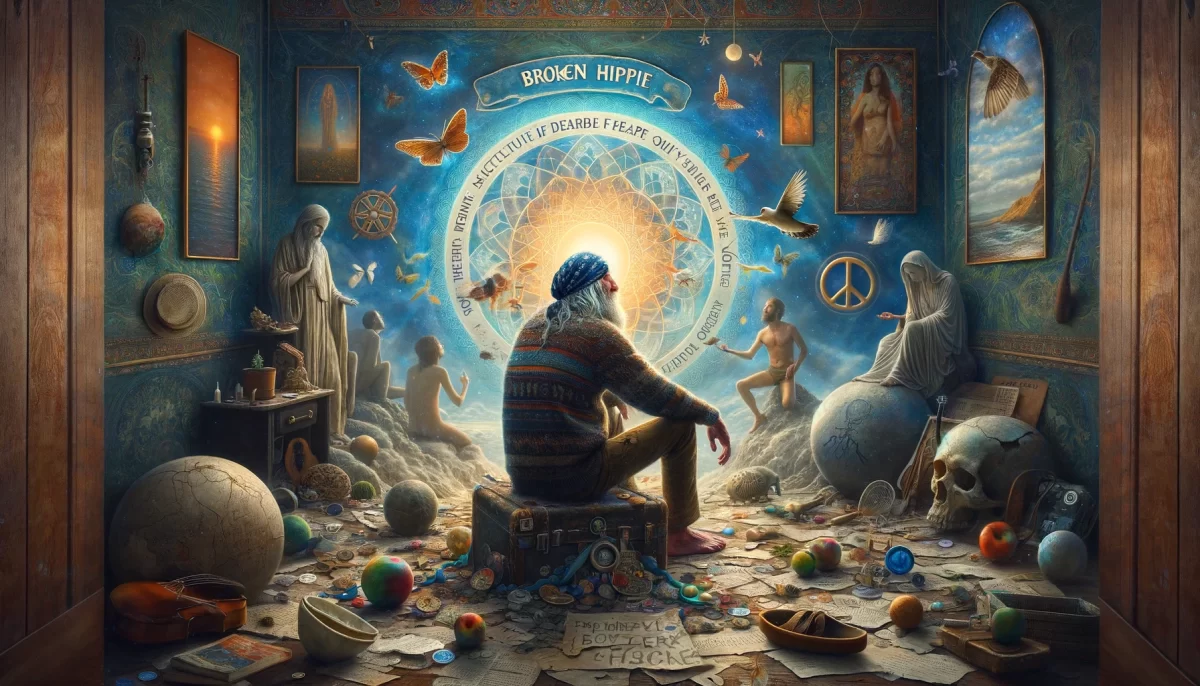
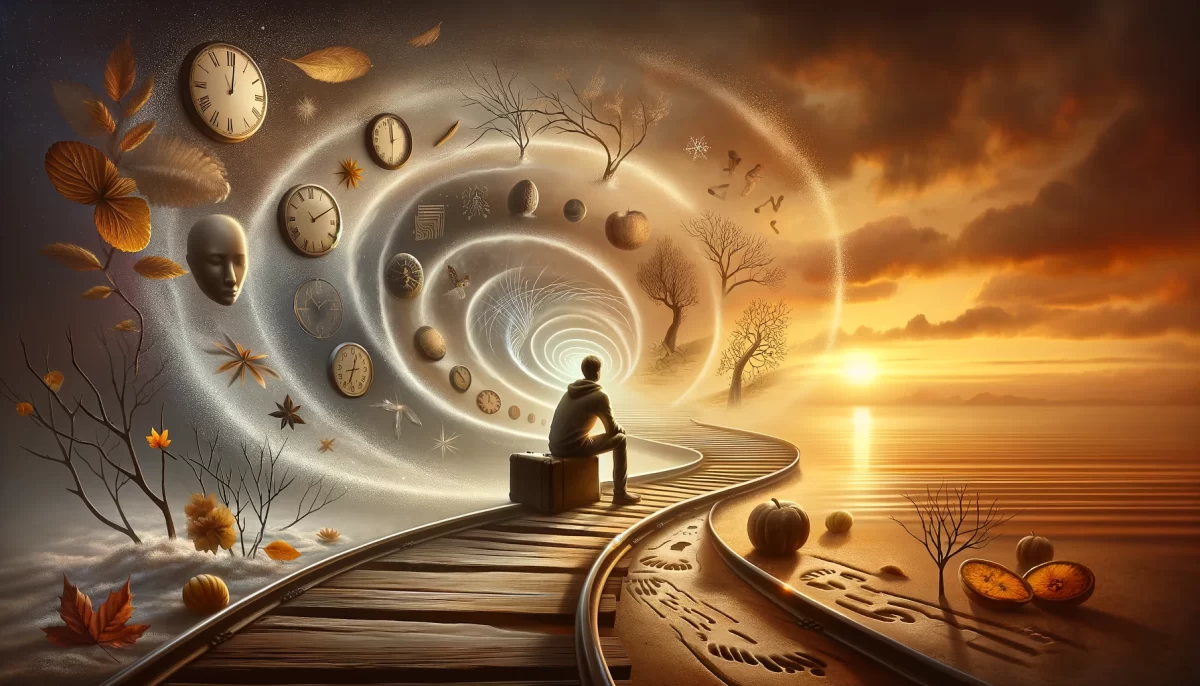

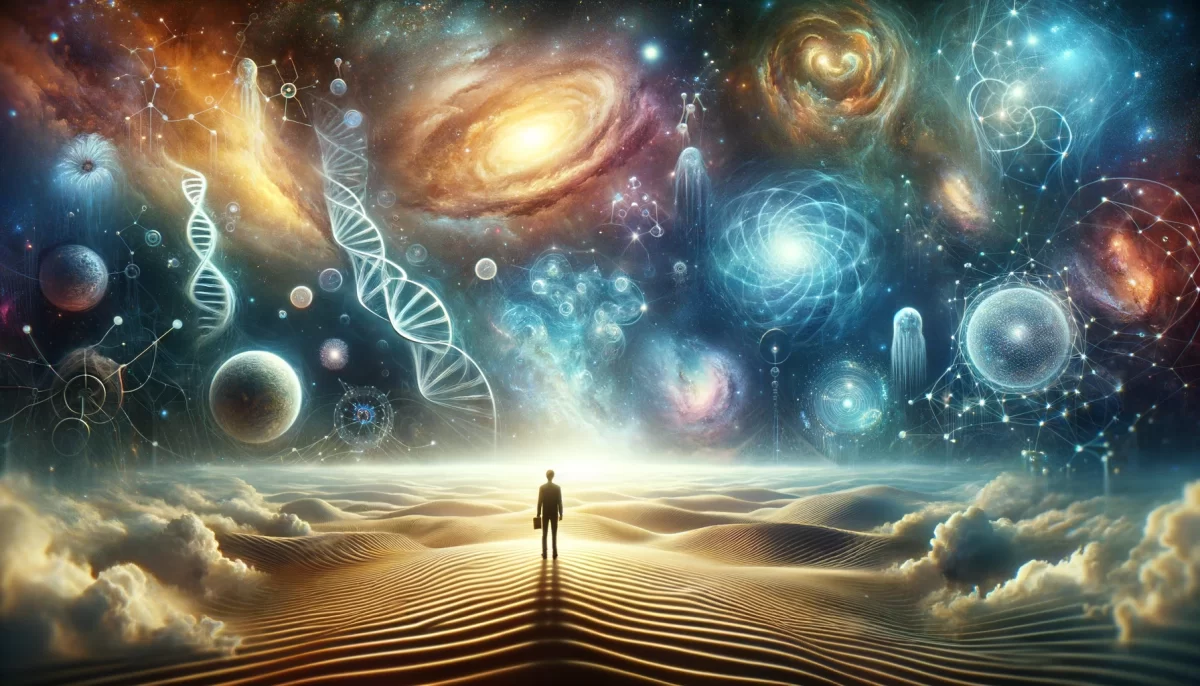
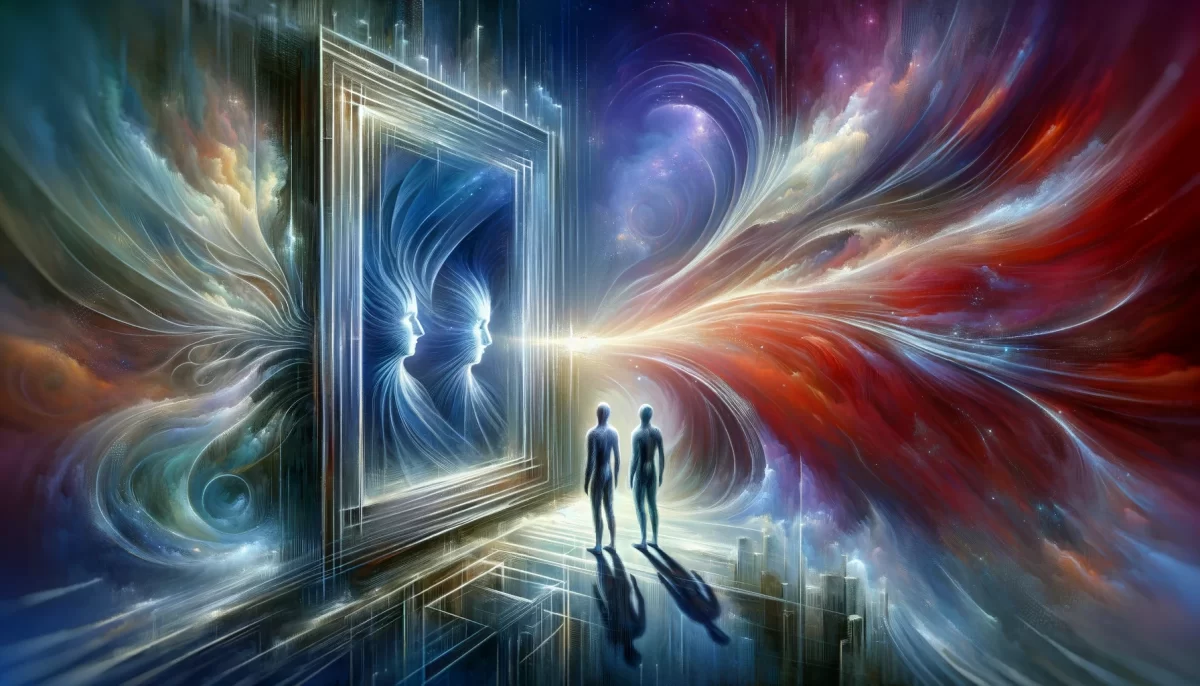


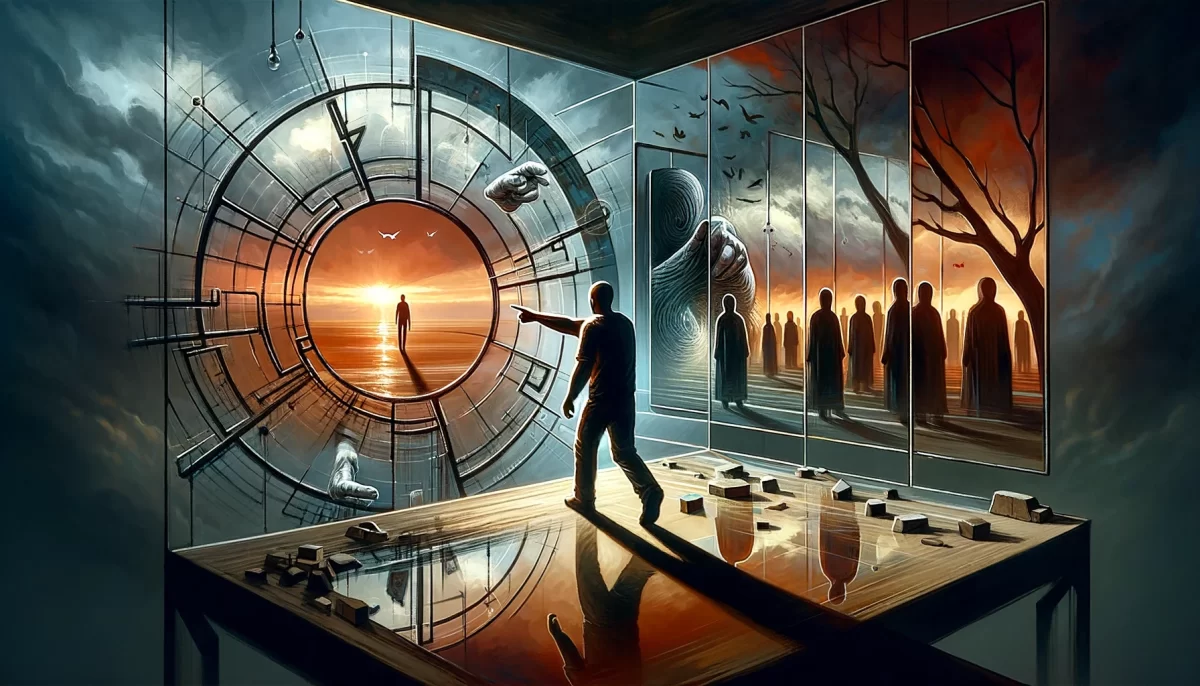
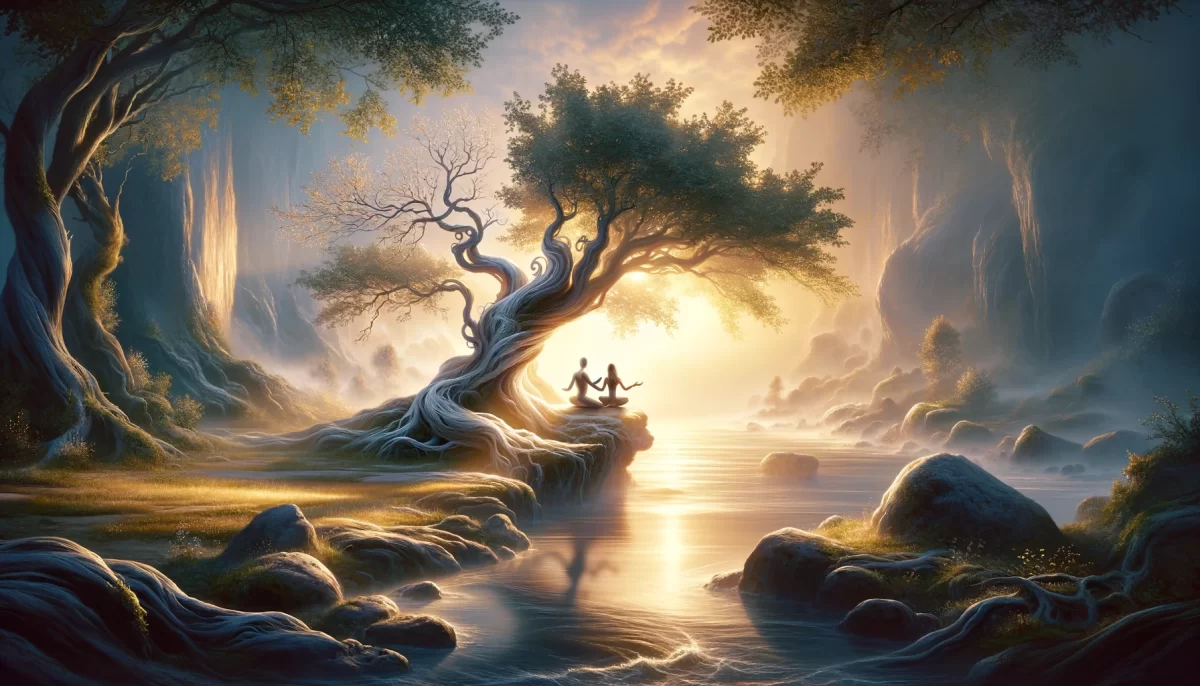


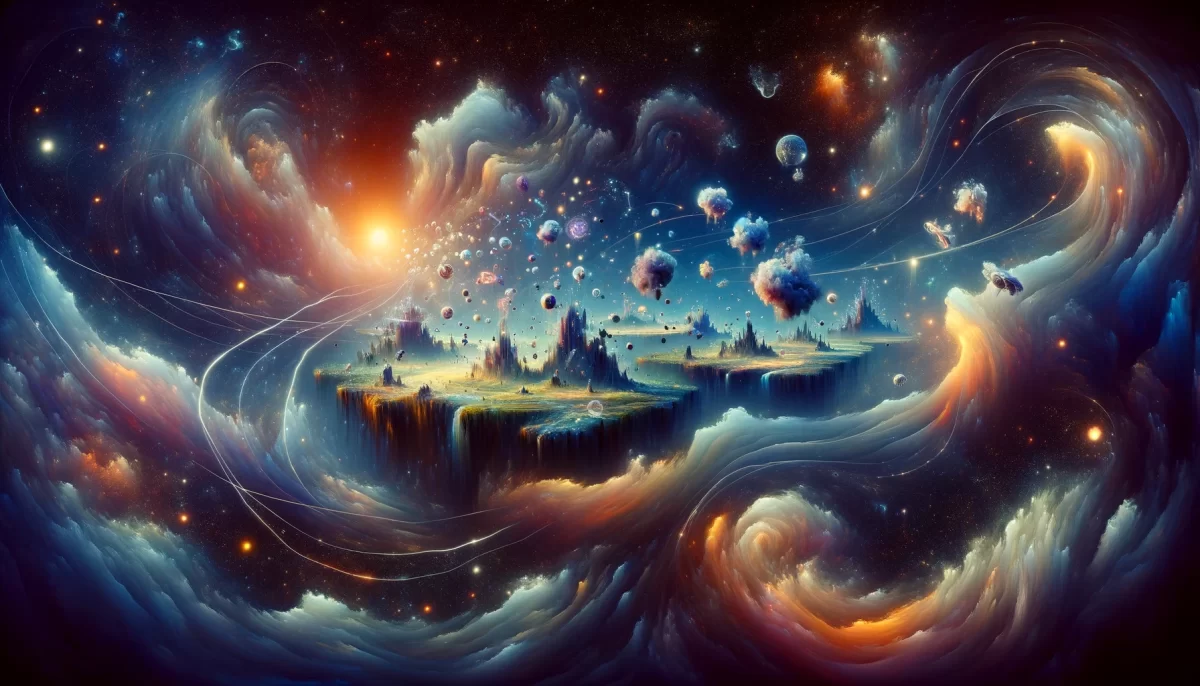
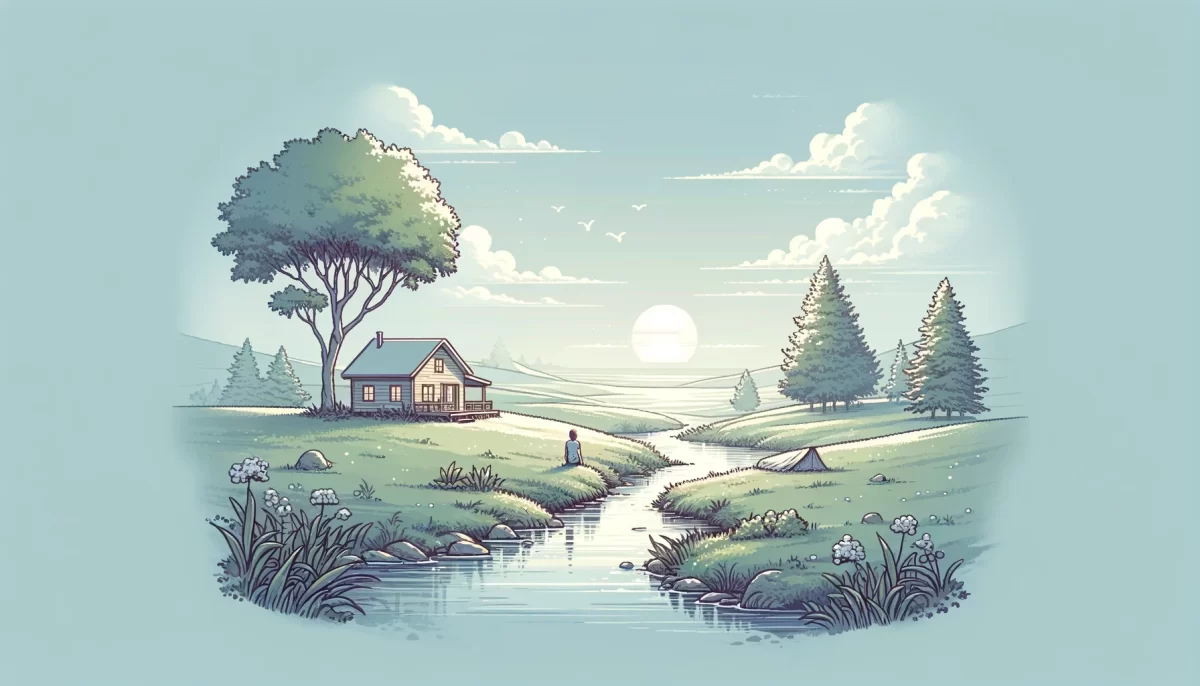
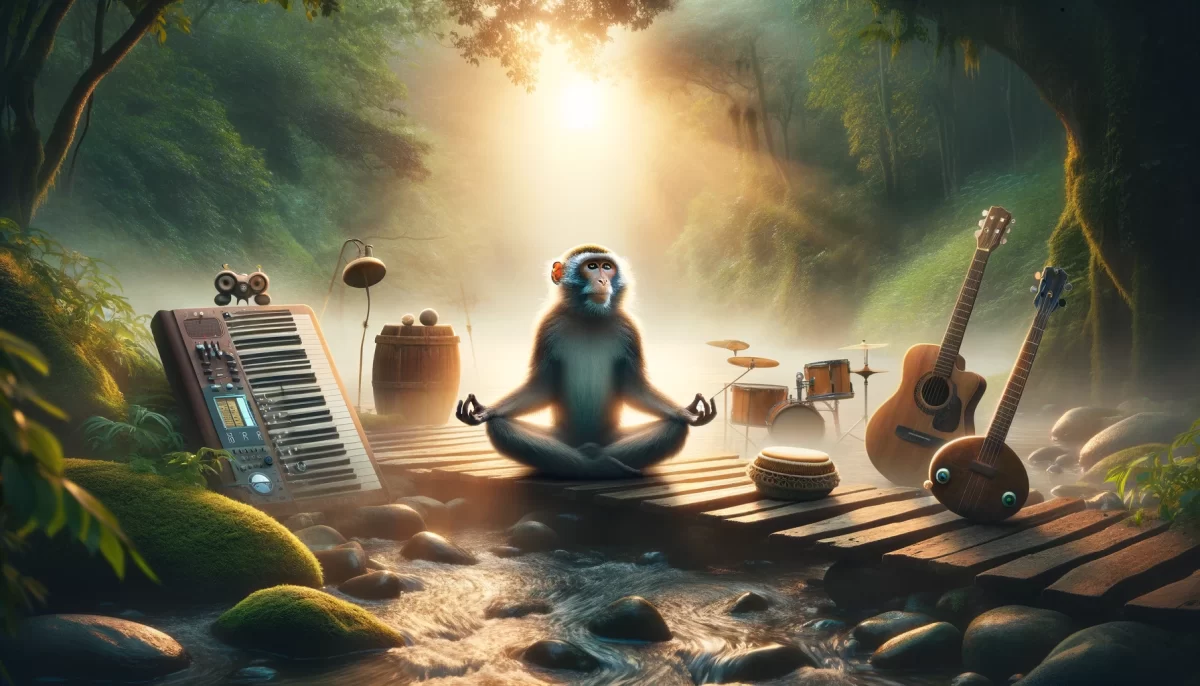

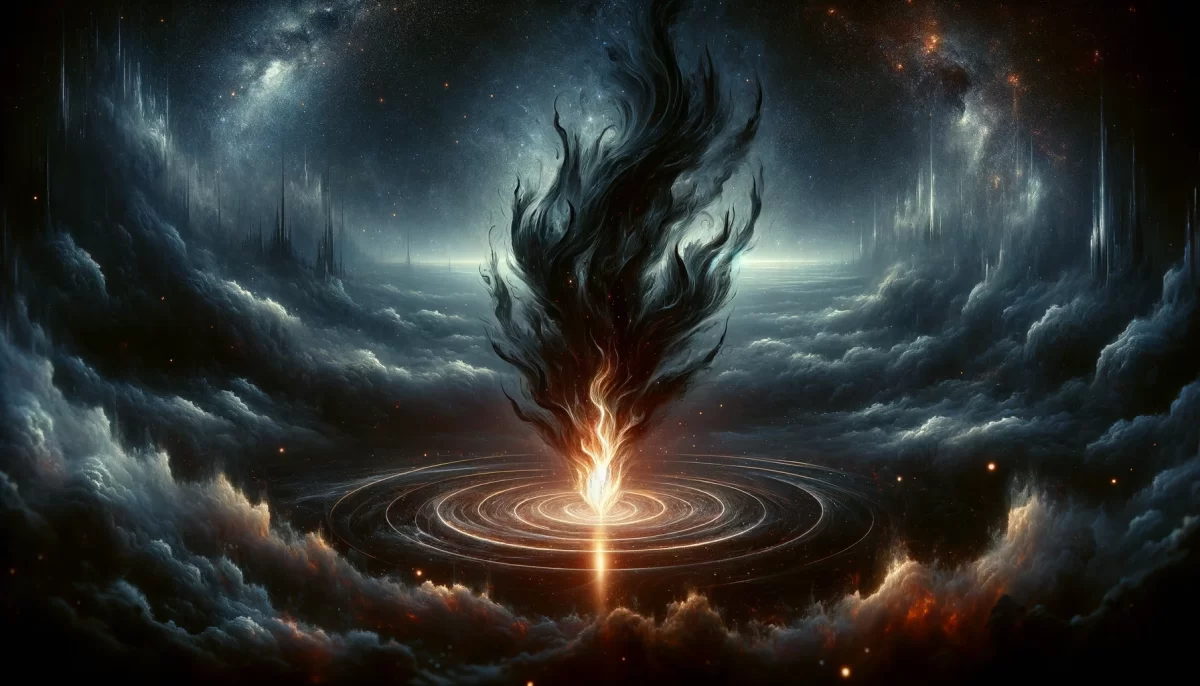

Leave a Reply